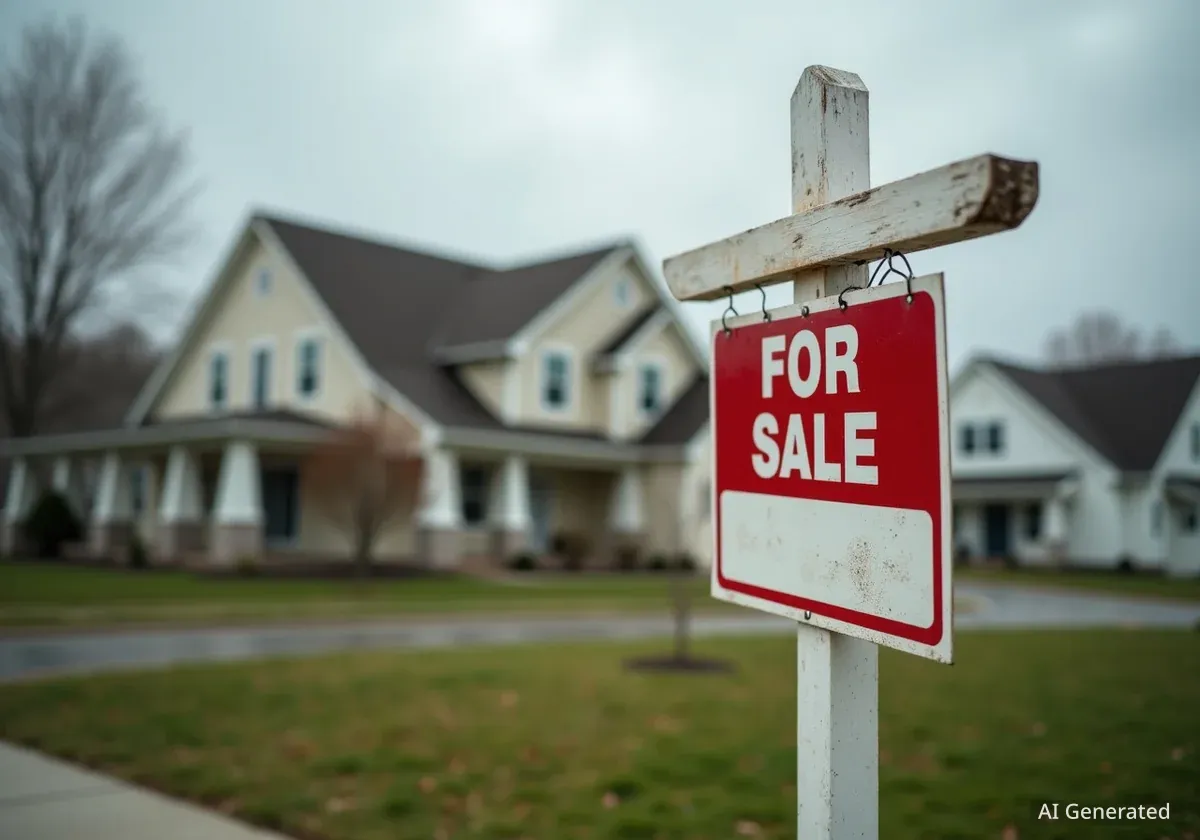The U.S. Federal Reserve is widely anticipated to lower its key interest rate this week, a move that commercial real estate professionals believe could encourage some new deals. However, industry experts caution that a rate reduction alone will not fundamentally alter property investment strategies or valuations.
Many analysts suggest the potential rate cut has already been factored into current market pricing. This is largely because Federal Reserve Chairman Jerome Powell has previously indicated that a reduction was likely. The move is seen as a positive signal but is not expected to resolve all challenges facing the sector.
Key Takeaways
- The Federal Reserve is expected to announce an interest rate cut, likely by 25 basis points.
- Real estate experts view the cut as a positive step for lowering borrowing costs and boosting confidence, but not as a cure-all for the market.
- The impact may be limited because the cut has been widely anticipated and is already priced into many potential deals.
- Broader economic factors, including post-pandemic office demand and tariff policies, continue to influence property valuations and investment activity.
A Welcome but Limited Boost for the Market
While a reduction in the federal funds rate is generally welcomed, its immediate effects on commercial real estate are expected to be modest. Lowering the cost of borrowing is only one component of a project's overall financial structure. Other factors, such as lender requirements and investor risk appetite, play equally important roles.
Mark Rose, CEO and Board Chair of Avison Young, described the potential cut as beneficial. "A cut can be seen as nothing but positive," Rose stated in an interview. He explained that since most development projects rely on financing, a lower cost of capital is a direct advantage. "That’s a good thing," he added, noting that the move would likely create more stability and confidence for investors.
Background on Federal Reserve Actions
The Federal Reserve has maintained its benchmark interest rate in the 4.25% to 4.5% range since December. This followed a series of 11 rate hikes throughout 2022 and 2023, which were implemented to combat post-pandemic inflation. The central bank's goal has been to stabilize the economy without triggering a severe downturn.
Investor Sentiment and Market Expectations
The anticipation of a rate cut has been building for weeks, partly fueled by public calls for lower rates from political figures, including President Donald Trump. This has led many investors to incorporate the expected change into their financial models and negotiations.
"Assuming the Fed gives the guidance that’s expected, cuts rates and signals more easing ahead... this is really a story about expectations playing out. We should not see a lot change unless Chair Powell sets a different tone in forward guidance."
This sentiment suggests that the market's reaction will depend more on the Fed's future plans than on the initial cut itself. If the central bank signals a series of future reductions, it could have a more significant impact on long-term investment decisions.
Impact Across Different Property Sectors
The effects of monetary policy are not uniform across all types of real estate. Each sector faces its own unique set of challenges and opportunities, and a rate cut will influence them differently.
Office Properties Face Headwinds
The office sector continues to grapple with the long-term effects of the pandemic, which shifted how and where people work. Reduced demand for traditional office space has put downward pressure on property values, with some buildings trading for significantly less than their pre-pandemic prices.
According to Gerry Trainor of Transwestern, a rate cut could help stabilize pricing for office properties, providing a clearer picture for potential buyers and sellers. However, it will not solve the underlying issue of lower occupancy rates.
Industrial Real Estate Seeks Stability
The industrial sector has also been affected by economic uncertainty. High interest rates and shifting tariff policies have slowed activity in recent months. According to NAIOP, the commercial real estate development association, demand for industrial space shrank by 11.3 million square feet in the second quarter, the first quarterly decline since 2010.
Industrial Market by the Numbers
- 27 million sq. ft. of industrial space was absorbed in the first half of the year.
- 11.3 million sq. ft. was the decline in demand during the second quarter.
- Early 2026 is when NAIOP predicts a return to positive absorption if rates fall and tariff clarity improves.
Industry groups believe that lower interest rates and clearer trade policies could reduce uncertainty and encourage more demand, potentially leading to a recovery in early 2026.
Multifamily Sector Shows Mixed Signals
The multifamily market is currently divided. A recent report from JPMorgan Chase identified two types of investors: those who are confident and actively acquiring assets, and those who are more cautious due to economic conditions.
Kurt Stuart, co-head of commercial term lending at JPMorgan Chase, noted an increase in acquisition activity. "People have more conviction making investments and purchasing assets," he wrote. Despite this, high construction costs and interest rates have had a chilling effect on new development. Data from the National Multifamily Housing Council shows that apartment starts fell by 35.1% between the first quarter of this year and the same period in 2024.
Valuations Depend on More Than Interest Rates
While a rate cut can provide a temporary boost, experts agree that a sustained recovery in commercial real estate valuations requires more fundamental improvements.
Chad Littell, national director of capital markets analytics at CoStar Group, explained that a rate cut provides a "tailwind" by easing pressure on borrowers and improving sentiment. However, he cautioned that this alone is not enough to drive up property values.
"Valuations are unlikely to move higher on a few rate cuts alone," Littell stated. "For that, a return of above-trend rent growth and a strong appetite for new investment will be needed to shift investor time preference once again, when buyers will pay now for the opportunity to generate higher incomes later."
Ultimately, the Federal Reserve's decision is just one piece of a complex economic puzzle. The commercial real estate market's future will be shaped by a combination of monetary policy, tenant demand, and broader economic stability.





